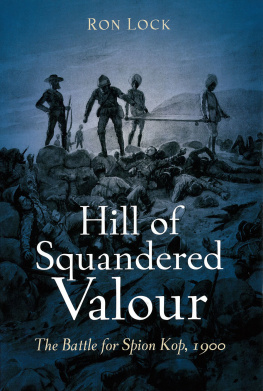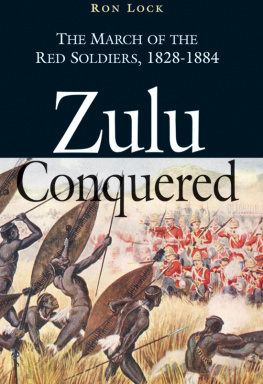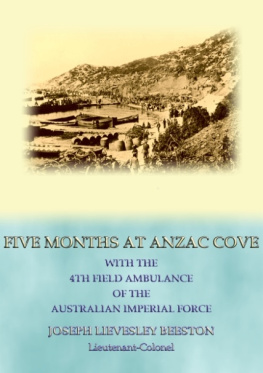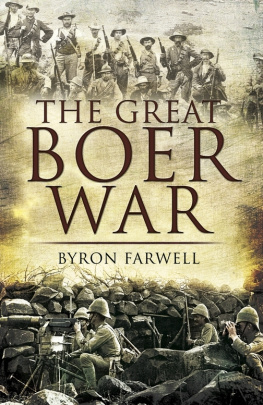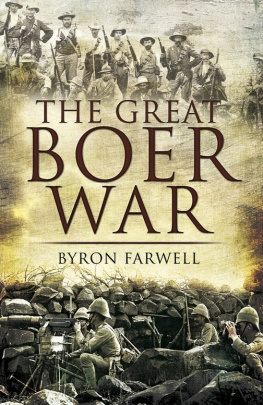



CONTENTS

ACKNOWLEDGMENTS
I am in debt to many people for the help and support they have pro vided to make the writing of this book possible. In gathering material over a period of 15 years, the most important acquisition, for which I must thank Arthur Konigkramer, the Chairman of AMAFA kwaZulu-Natal, has been the Spion Kop Despatches. At first glance this is a rather mundane document, but read deeper and it becomes apparent that the intention of most senior officers, in penning their reports, was to acquit themselves of blame and heap upon others the onus of defeat.
I am grateful to Fred Herbert, John Smallwood, Alan Slater and other old soldiers, all long departed, whose combined military service encompassed many theatres of war. It was they who, back in the 1970s, formed BONS (Battlefields of Natal Society), and first introduced me to Spion Kop and many other battle sites throughout the beautiful province of kwaZulu-Natal.
Major Paul Naish (Rtd) has not only been a constant support but on the many times we have walked the summit of Spion Kop together, his enquiring mind, sharpened by a lifetime in military intelligence, would invariably pose a new facet of the battle to explore. He also kindly gave me access to his collection of Anglo-Boer War literature.
Once again, I must thank Elizabeth Bodill who typed the manuscript and its numerous revisions more times than either of us care to remember. The drudgery, however, was brightened to our delight in the occasional howler emerging from the text.
My thanks also to Nicki von der Heyde of Campaign Trails who, despite her busy schedule, found time to scrutinize the draft. Her knowledge of the Anglo-Boer War and a degree in English Literature made her comments and suggestions particularly valuable.
In the UK my thanks are due to Colonel I. H. McCausland, of the Royal Green Jackets Museum, for details of the Kings Royal Rifles involvement in the battle; the Fusilier Museum for details of the Lancashire Brigades ordeal on Spion Kop; and the National Army Museum for its assistance. Thanks also to Philip Peplow, who kindly made literature available from his library, and to Anita Baker, my editor, whose meticulous eye brought a number of oversights to my attention and whose suggestions were much appreciated.
In South Africa I have to thank Msasa Books, Hillcrest; Adams and Company, Durban; ABC Books, Umhlanga Rocks; and Christison Rare Books, Port Elizabeth, for finding books long out of print and, better still, inexpensive reprints. I must also express my thanks to Johan du Plessis for his patience and skill in enhancing the illustrations and placing them on disc; Chris Smallwood in making available his rare copy of Gibsons The Story of the Imperial Light Horse; the Campbell Collections, formerly the Killie Campbell Library; Elizabeth Spiret of the Ladysmith Siege Museum; and finally my dear wife Brenda for her enduring support and patience as the authors clutter of raw materials once again engulfed the house.

INTRODUCTION
I n 1899 Britain, the ruler of the greatest empire on earth, was set to crush the insignificant Boer republics of the Transvaal and the Orange Free State. Her cause was expansion of Empire and accumulation of wealth laced with a desire for vengeance, an emotion that had been stewing within the nation and her army for over 18 years. As will be seen, the Boer republics desired no more than to govern themselves and to get on with their pastoral way of life without foreign interference. It was their misfortune that below the ground upon which their cattle grazed and their crops grew, there lay concealed gold and diamonds in quantities hitherto unknown.
During the preceding 100 years Britain had fought many wars in Africa from the Cape in the south to Egypt in the north and from Ashanti land in the west to Abyssinia in the east. It was Britains fortune to eventually win her wars, albeit after an initial bloody set back. However, there had been one conflict, usually referred to as the First Boer War, that had seen some of Britains crack troops in humiliating headlong flight before a throng of armed farmers. The subsequent terms of peace following this ignominious defeat, lamely negotiated by Brigadier-General Sir Evelyn Wood VC, were equally humiliating. Now 18 years later, the Boers, who were master horsemen and amongst the hardiest stock in the world, had come to regard themselves as a white race of Africa. Furthermore, they were prepared to take on the might of Britain once again. During the years since they had first defeated Queen Victorias soldiers many things had changed, especially the weaponry that the western nations were churning out for sale to approved customers. The Boers, despite their reluctance to engage in war, had, with their new found wealth of gold, not been slow in availing themselves of a formidable arsenal, mainly acquired from Germany.
The Boer commandos were armed with a great variety of rifles, often individually owned by the burghers themselves. They included the German MauserWe put our trust in God and the Mauserlikely the most popular, but other makes included the Lee-Metford (British), mainly captured during the Jameson raid and other later battles; the Martini-Henri, originally the British Armys standard issue, but now manufactured in Belgium; and half a dozen lesser known makes of different calibre. It will be noted that when the number of casualties inflicted by the Boers are quoted, those wounded seem to be excessively high in proportion to those actually killed. The reason for this was the shape and size of the Mauser bullet and the very high muzzle velocity: if it did not hit bone or a vital organ, it would likely penetrate and exit the victim without inflicting lasting damage. The Mauser, as with the Lee-Metford, was magazine-fed, whereas the Martini-Henri was a single-shot breech-loader but, nevertheless, capable of firing 12 rounds a minute and preferred by the older generation for its stopping power. Handguns would have been an individual choice and expense. Bayonets, except for those carried by the state artillery men, were not favoured or used by the Republic.
On the other side, the British had the standard issue Lee-Metford rifle which was, with bayonet fixed, a formidable weapon. British officers were issued with a standard .45 revolver but many purchased their own handguns and, during the early days of the war, still carried swords. Lancer regiments were equipped with a fearsome bamboo-shafted lance, topped with a pointed steel triangular head capable of inflicting appalling wounds. They also carried a curved sabre in a steel scabbard and a standard issue revolver. Dragoon and Hussar regiments were similarly equipped apart from the lance.
Undeterred by the Boer arsenal, Britain deliberately set in motion events that would eventually lead to war, its politicos and generals being supremely confident that the Boers would capitulate or suffer a quick defeat.
Next page
